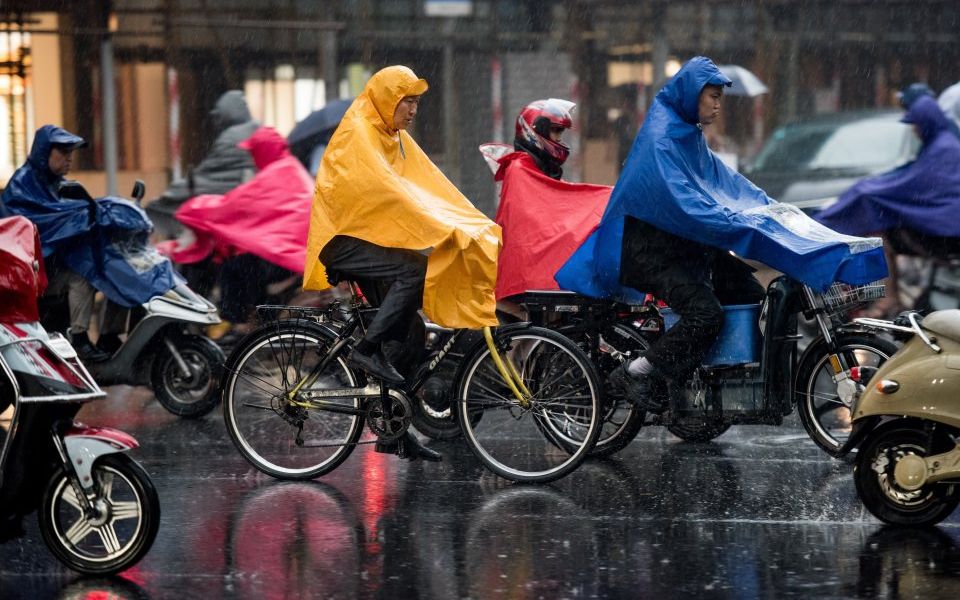
China in stormy waters

China is sounding a bit exasperated by Mr Trump’s words and tariffs. The usually-cautious Ministry of Commerce refers to the possibility of the US losing its reason. President Xi thought he had an understanding with President Trump, only to discover Mr Trump intends to press very hard over intellectual property, investment in the digital area and trade in certain high-technology products.
Both sides have now implemented their tariffs on $34bn of each other’s goods. China has aimed to hit the areas of the US that voted for President Trump the hardest. It has placed high duties on soybeans, meat and vehicles. The US remains mainly concerned about China’s attack on US intellectual property, and has been seeking to impede or ban trade in various technologies, and to stop acquisitions of companies.
Technological advantage
US dominance worldwide rests much on its technology. It is the digital revolution which has driven stock markets higher and better company turnover and profits in the US in recent years. It is a US concern that China might lift too much of this technology that motivated President Trump’s enquiry into intellectual property (IP) theft. There is as yet no sign of a negotiated settlement of these matters. President Trump seems happy to up the rhetoric and pile on more pressure. China is responding with counter threats. At some point there needs to be serious work between the two on how China can reassure on IP and open her markets more, and how the US can then remove its threats and tariffs. Until there is the trade war remains a negative.
US supremacy in technology also rests on its substantial military research and development (R&D) and the mutual spin off of R&D between the military and civilian sectors. Underlying the trade conflict is a wider dispute over the relative roles and strength of the US and China in the world. China has been busy building defence facilities on various islands and reefs in the South China Sea. The islands and reefs are often claimed by neighbouring states, with Malaysia, Vietnam, the Philippines and Brunei amongst those concerned at China’s expansion. China has recently taken nuclear bombers to landing strips in contested places. The far flung Spratly islands, The Paracel Islands, Scarborough Shoal, Mischief and Subi reefs are at the centre of these disputes.
The US and its allies decided that the correct response is to insist on freedom of navigation in waters close to these contested places, and to send naval vessels there to assert their rights. The US is also seeking to counter Chinese development of her grand Belt and Road Initiative, seeking to promote joint development and investment from China through the Middle East, assisting a number of countries on the land and sea routes from Asia. The US has a network of allies and economic partners throughout the region, and seeks to provide a counter to Chinese capital and political expansion.
Crack up boom?
The International Monetary Fund (IMF) has recently written a working paper asking if the Chinese credit boom of recent years is different. Normally it says countries which allow credit to build up to such an extent end up with a bust. They concede that China is different in several important respects. The country has a strong balance of payments and substantial foreign exchange reserves. Narrowly-defined state debt is low. The state owns the main commercial banks and has considerable control over the rest of the system. The bad features of the Chinese position is the sheer scale of new debt needed to boost the growth rate to the target of more than 6%, and the possible bad debts hidden in a system which tends to understate them.
The Chinese authorities are well aware of the need to rein in excess credit and tackle bad loans. Recent money growth has slowed to around 8% from the double-digit figures we have been used to. There is a concerted effort to deleverage parts of the corporate sector, and to rein in the shadow banks that have undertaken substantial risky lending in recent years. The whole process of deleveraging is intimately connected with the state’s wish to cut overcapacity in capital intensive industry, and to switch growth from dependence of exports and investment to a consumption-based model. The state often owns both sides of the transaction, so has flexibility in how and when to write it off.
The state’s money policy is balanced to the point of being contradictory. The state is cutting back on various corporate loans and shadow banking credits, but at the same time is relaxing reserve requirements and asking the financial system to deliver sufficient new credit to keep growth above 6%. Bank balance sheets are still swollen and high in relation to GDP, and there are issues over the sale of bad loans to asset management concerns, and about the extent of the bad debts that lie somewhere in the financial system.
We watch this process carefully. It appears that the Chinese authorities have the powers to avoid a credit crisis and collapse, and so far have managed limited deleveraging well. All this will remain more under the spotlight, given the current to US antipathy China, and given the continuing strains from the trade dispute. It means the risks in China have been increased by the economic row with the US and the negative spotlight the US shines on all things Chinese.
Nothing on this website should be construed as personal advice based on your circumstances. No news or research item is a personal recommendation to deal.